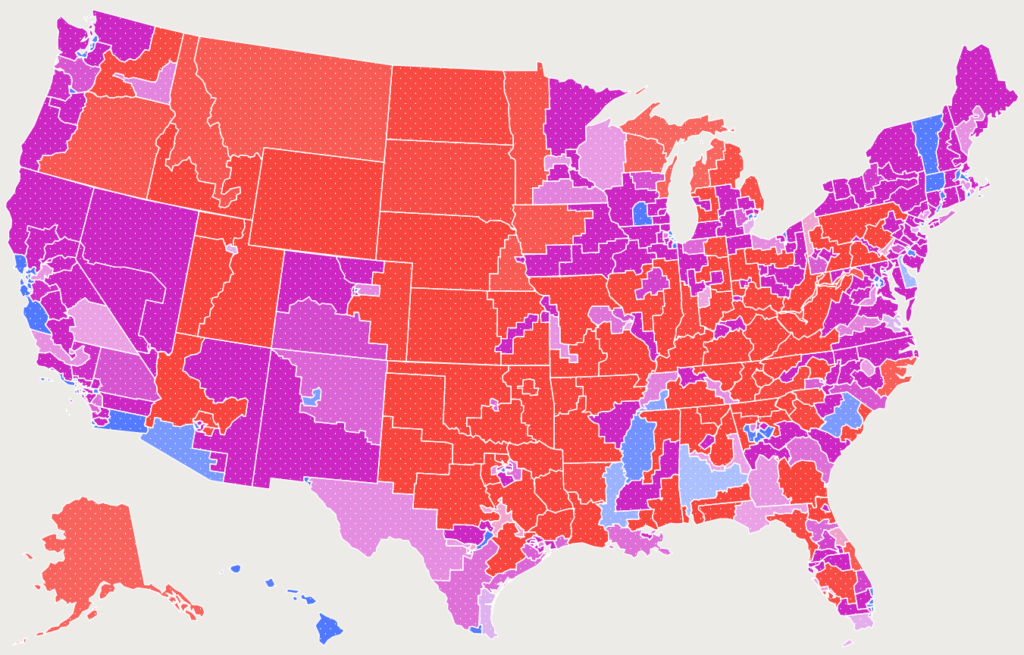Renovating the House: Redistricting and the Midterm Elections

Image courtesy of FiveThirtyEight
By Chris Carey
Members of the U.S. House of Representatives anxiously hold their breath every ten years, wondering if their livelihood and chance at powerful leadership will be ripped from their grasp. At each census and at the mercy of sometimes independent, oftentimes partisan commissions, U.S. Representatives watch while each state publishes proposed redistricting for Congressional seats. David Wasserman of the Cook Political Report published a story on the most recent round of redistricting following the 2020 census in January of 2022.
The maps being drawn after the most recent census are decidedly less partisan than in prior years. More independent commissions have replaced traditionally partisan power over the maps in many states, and even in states such as Texas, Indiana, and Iowa where Republicans could have pursued partisan maps, there are tamer alternatives that have been proposed or approved. Notably, some Democratic states such as Illinois, New Mexico, and Oregon have been criticized for being heavily gerrymandered. Wasserman builds the conclusion that although there exists much less aggressive Republican-driven gerrymandering than in prior years with the establishment of more independent redistricting commissions, the overall redistricting process to date favors a Republican House in 2022 at the least.
Wasserman notes that of the districts that “flipped” from Republican to Democrat, 11 of the 15 are already held by Democrats. Conversely, of those that did the reverse, only 1 of the 9 is currently held by a Republican, producing a net Republican gain of 4 seats of those that shifted. Additionally, when the net of the newly created and recently eliminated seats is calculated, the current standing is a +1R seat. These slim victories may make all the difference for Republicans in 2022, a year that already favors a Republican House before the redistricting is finalized.
This is due in no small part to the public’s disapproval of President Joe Biden, whose 53.7% unfavorability rating is only slightly lower than President Donald Trump’s 56.2% at the same time in his presidency. Presidential performance is a key indicator for midterm races, and as of now, Biden’s numbers would indicate a clear Republican advantage in many swing districts.
The final redistricting breakdown will also depend heavily on the potential court cases to be decided for Ohio, North Carolina, Georgia, and others. Still, ongoing discussions in states like Florida, Missouri, and Tennessee will dictate a final outcome as well and will depend on how willing the Republican-controlled legislatures are to punitively redistrict. On the other side of the aisle, Democratic control of New York brings a serious question mark to the conversation, as there is the possibility for a number of seat pickups for Democrats should the legislature aggressively alter its current map.
Further, there are 29 Democrats who will retire from the House, compared to only 14 Republicans, most of whom would have run for re-election in safely Republican districts. Many Democrats choosing to retire or not run for reelection would have faced a Republican-friendly district had they chosen to defend the seat, including Stephanie Murphy’s Florida seat as well as G.K. Butterfield’s North Carolina seat.
Although the map leans slightly less Republican than the 2010 map, the unfavorability of Democrats and President Biden’s unfavorability spell out a very likely chance for a change in the majority of the house where Republicans only need to flip a net of five districts.
Some important considerations moving closer to the midterm elections will be the combination of Associate Justice Steven Breyer’s retirement (even though the House has no say in the confirmation of Justices to the court), and hot-topic abortion cases before the Supreme Court that may galvanize Democratic voters at the midterms.
Another point to watch will be how the coronavirus pandemic is handled and whether or not the Biden administration can oversee a notable drop in cases, economic rebound, and reopening of many aspects of life before the pandemic.
Finally, current tensions with Russia and China may benefit Democrats in the long run if strong leadership out of the White House, House of Representatives, and Senate can successfully navigate these difficult foreign affairs.







